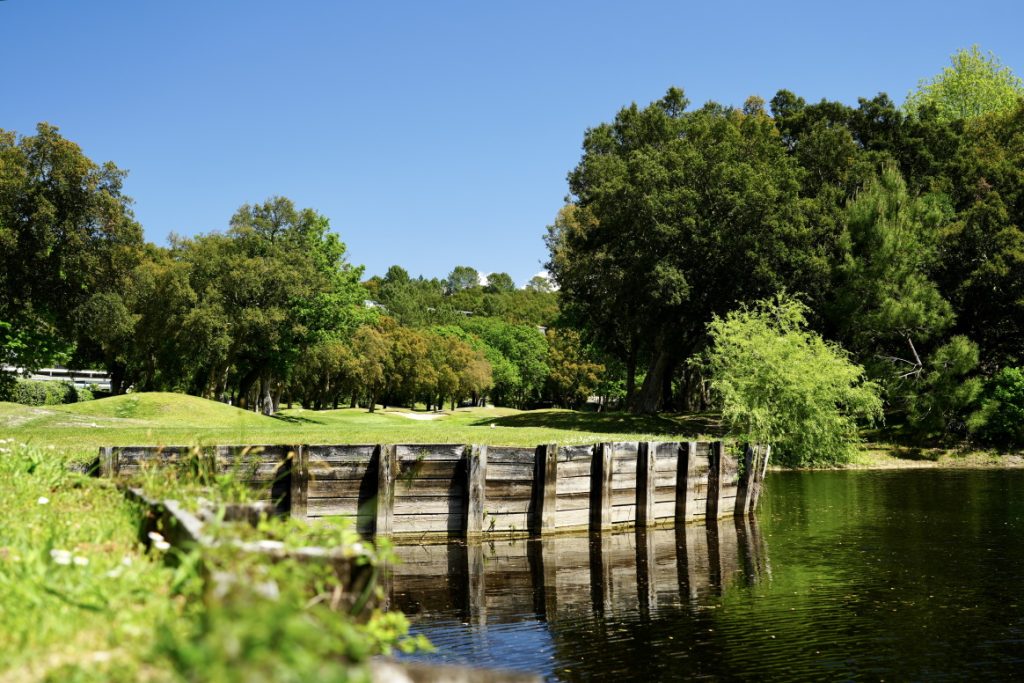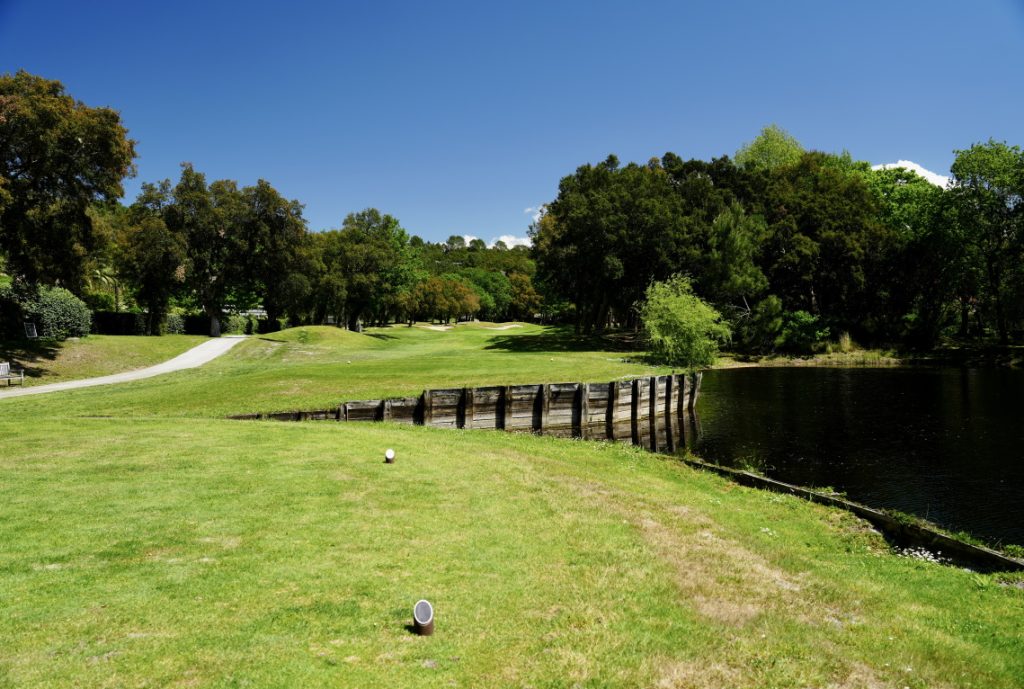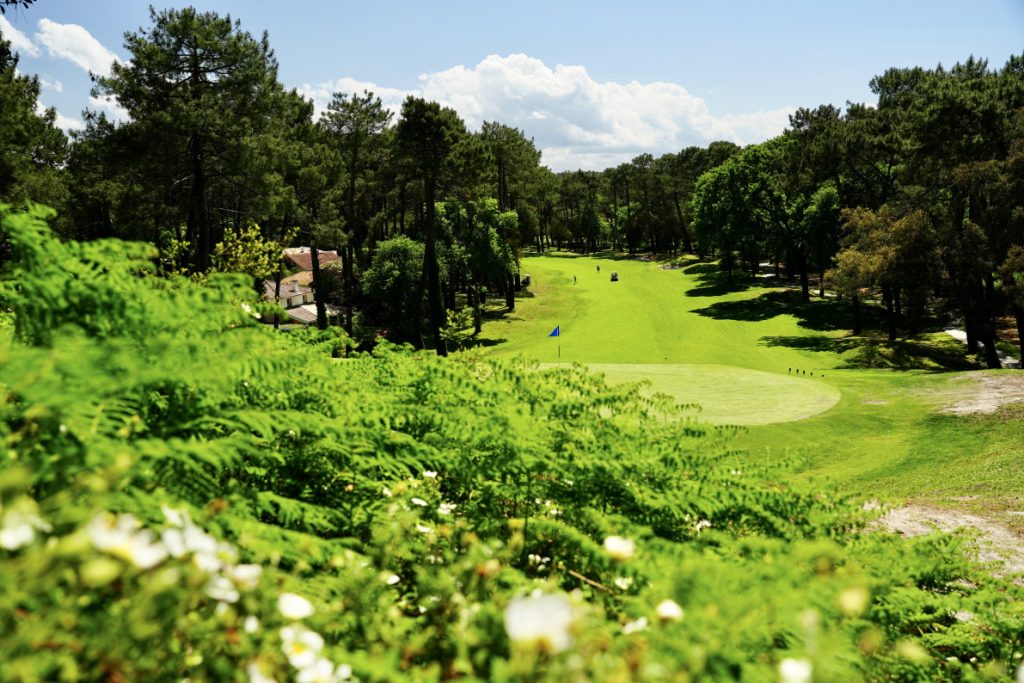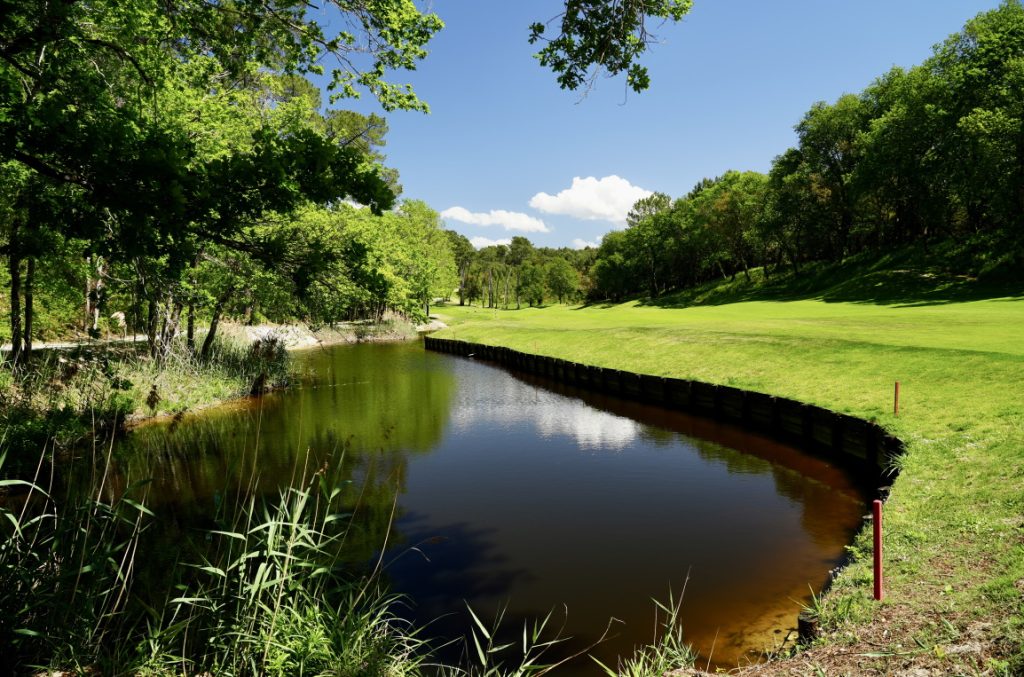Like all the courses on the Landes coast, our water management is very particular. The dune blocks the natural flow of water and, in practice, we have too much of it, especially in winter… And this is despite our maritime pine forests, which were planted precisely to drain all this formerly marshy area. So if we don’t draw down the water table, it’s going to submerge not only several holes on the course, but also neighbouring homes. For the moment, this overflow is discharged into the sea, as the natural water cycle would dictate. But we’re actively thinking with Seignosse town council about solutions that would allow us to conserve this water for reuse in summer.
Just because we have too much water doesn’t mean we don’t water with great precision and care. Our new watering system, to be installed between late 2022 and early 2023, aims to keep the grass in a state where it can only survive in summer. We have changed the layout of the sprinklers on the course to make them more efficient. They also have a shorter reach, which means we can reduce the amount of water used by being more precise. This saving will be at least 30% of our previous consumption.


On the greens, we now have ‘back to back’ sprinklers. These are two back-to-back sprinklers that can be managed independently. One is directed towards the green, the other towards the pre-green. So you can choose not to water a green for a few days to dry it out if you need to, while keeping the surrounding area more moist. From an agronomic point of view, this is very interesting because drying out the greens means that water-hungry grasses such as bluegrass can be limited and the ones you want to plant, such as bentgrass, can be reinforced. It also helps to develop the greens’ root system. At some point, you have to stress the plant and force it to draw on its resources deep down.
That’s why we’re stepping up our mechanical operations at the same time, because we want to reduce the level of organic matter. We want to remove what we often call the ‘felt’ because it acts like a sponge in a washbasin. This felt prevents the greens from becoming firm and retains a maximum amount of water, which is a vector for disease. Our idea is to reverse the trend by extracting this felt and adding sand, which will be much more filtering. That’s why we carry out an aeration operation once a month and a verticut or sandblasting operation twice a month. What’s more, we don’t mow the greens every day, but alternate between mowing and rolling. This strengthens the plant while ensuring a firm, rolling playing surface.


